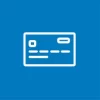The term billing cycle refers to the recurring process by which debt is generated and settled. In a broad sense, the term is synonymous with the term settlement cycle. In this use of the term, it denotes the process which begins with the request for goods or services in exchange for a promise of payment and end when payment has been received by the goods or service provider.
In finance, the term is most commonly used in reference to revolving loans such as those obtained using charge cards and credit cards.
The first stage in a typical billing cycle is the purchase of goods or services on credit, with the cost of the purchases being fronted by the merchant or a third-party lender (a credit card issuer, for example). In the second stage, the lender requests repayment of the loan by the borrower (via a credit card bill, for example). In the third stage, the borrower settles their debt by repaying the credit, completing the billing cycle.
Credit cards typically run on a 1-month billing cycle. At the beginning of each billing cycle, the card issuer provides a line of credit equal to the difference between outstanding debt carried over from previous billing cycles and the card’s credit limit. During the billing cycle, the cardholder may make purchases equal to the available line of credit. At the end of the 1-month term, the issuer sends the cardholder a card statement outlining the loans received and requests repayment of the loans by a specific date (the due date) via a credit card bill. In the case of charge cards, the cardholder must repay the amount own in full by the due date. In the case of credit cards, the cardholder is only required to repay a small portion of the debt by the due date. The unpaid portion of the credit card loan is carried over to the next billing cycle as a new loan.
More on this topic:
Swiss credit card comparison



